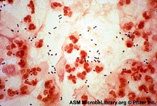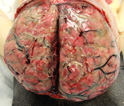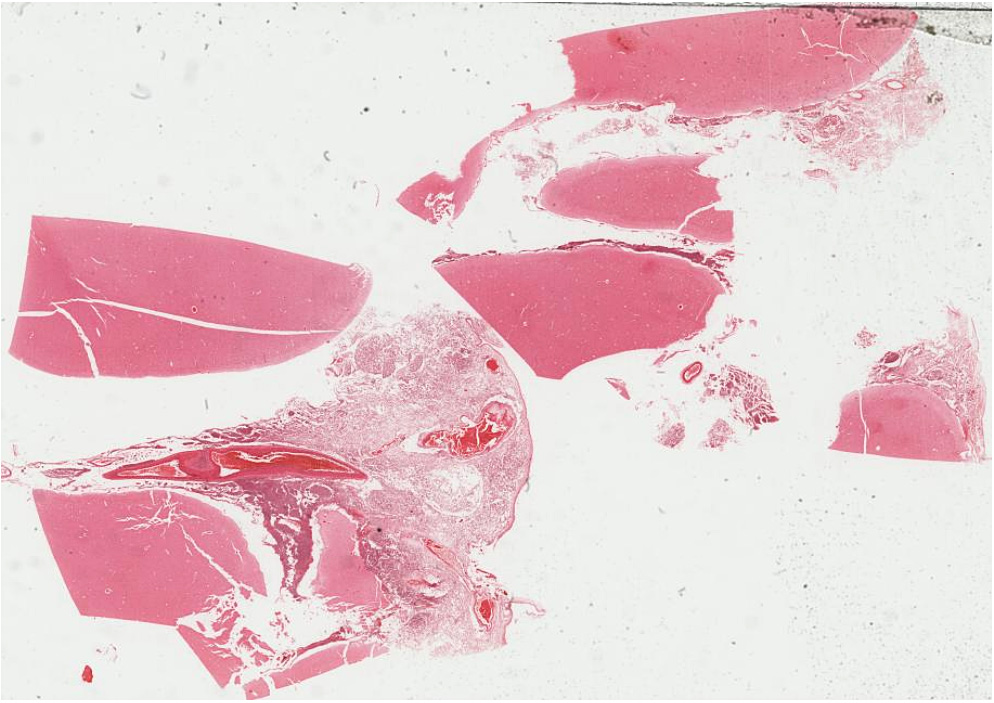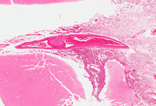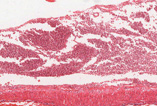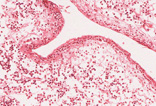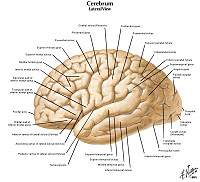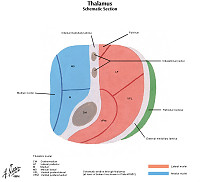The CSF Gram stain showed Gram-positive diplococci, subsequently growing S. pneumoniae. A peripheral blood culture revealed the same organism.
|
Clinical History: A 14-year-old girl is brought to the emergency department with a 1-day history of fevers and decreased consciousness. She had been well until the previous day when she awoke with left-sided headache, anorexia, fatigue, and subjective fevers. During the course of the day, her level of consciousness decreased. In the ED, her temperature is 38.8°C, and she is difficult to arouse. She resists neck flexion, but the remainder of her physical examination is unremarkable.
Clinical History, Part 2: Labs are drawn resulting in the following:
Clinical History, Part 3: A sample of CSF fluid is submitted for Gram staining and blood cultures are drawn. The results of the CSF Gram stain are shown below. Image Gallery: Diagnostic lab image questions:
Clinical history (conclusion): Head CT scan shows opacification of the left mastoid with no obvious bony destruction. She is admitted to the pediatric ICU, where she is treated with intravenous vancomycin, ampicillin, and ceftriaxone. Despite aggressive therapy and supportive care, the patient never regains conciousness. She develops intractable seizures and hemodynamic instability and dies three days after hospital admission. Gross and microscopic images from specimens obtained at autopsy are shown. Virtual Slide (slide courtesy of IndianaU): [DigitalScope] Image Gallery: Gross image questions:
VM image questions:
|
|||
